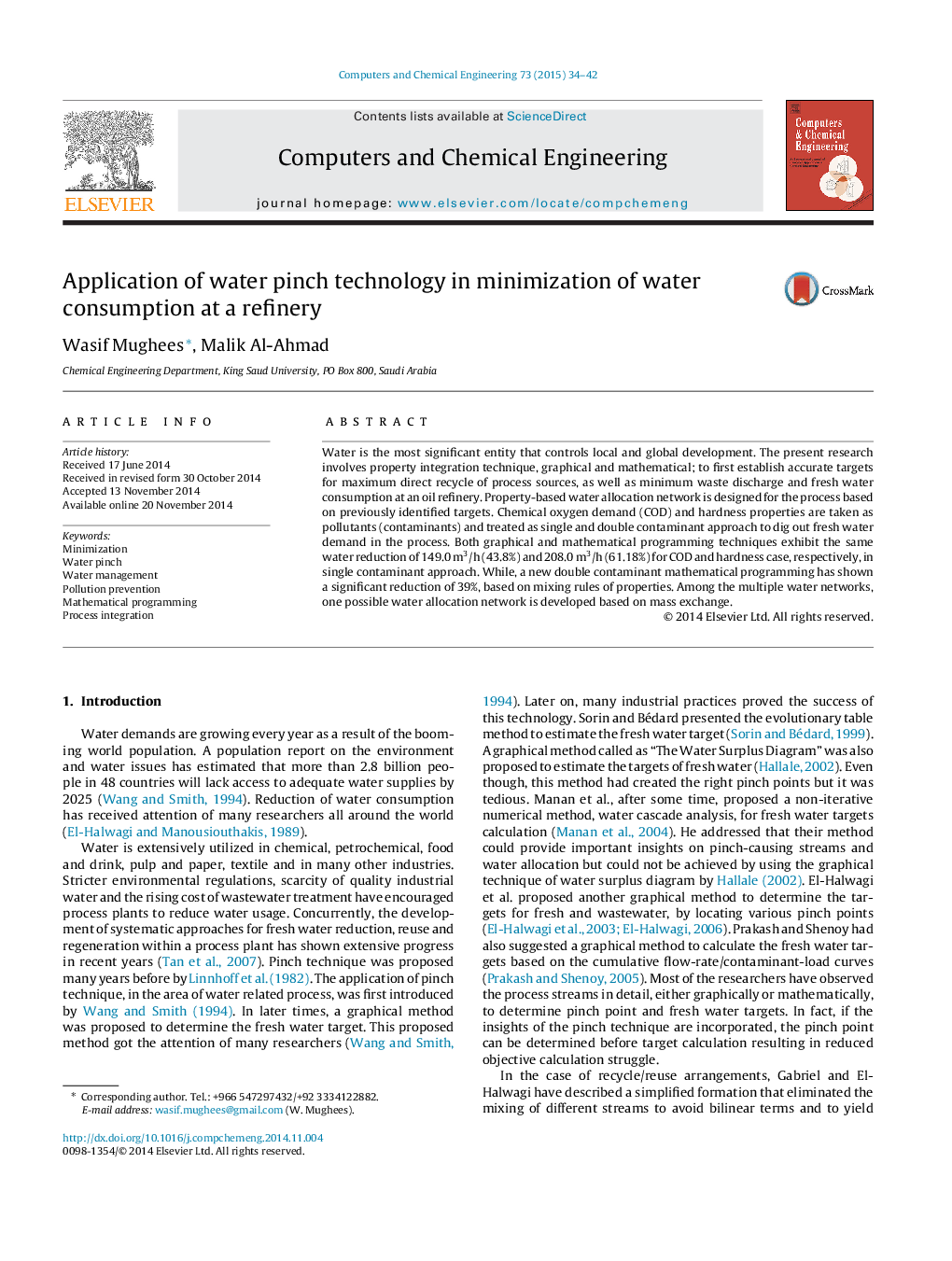| Article ID | Journal | Published Year | Pages | File Type |
|---|---|---|---|---|
| 172302 | Computers & Chemical Engineering | 2015 | 9 Pages |
•Property integration technique through graphical method and mathematical modeling.•COD and hardness contaminants with single and double contaminant approach.•Study of feasible water networking among sinks and sources through new LINGO tool.•Current methodology outcomes are more precise than other technique and results.•Present technique briefs about water allocation without extensive calculations.
Water is the most significant entity that controls local and global development. The present research involves property integration technique, graphical and mathematical; to first establish accurate targets for maximum direct recycle of process sources, as well as minimum waste discharge and fresh water consumption at an oil refinery. Property-based water allocation network is designed for the process based on previously identified targets. Chemical oxygen demand (COD) and hardness properties are taken as pollutants (contaminants) and treated as single and double contaminant approach to dig out fresh water demand in the process. Both graphical and mathematical programming techniques exhibit the same water reduction of 149.0 m3/h (43.8%) and 208.0 m3/h (61.18%) for COD and hardness case, respectively, in single contaminant approach. While, a new double contaminant mathematical programming has shown a significant reduction of 39%, based on mixing rules of properties. Among the multiple water networks, one possible water allocation network is developed based on mass exchange.
